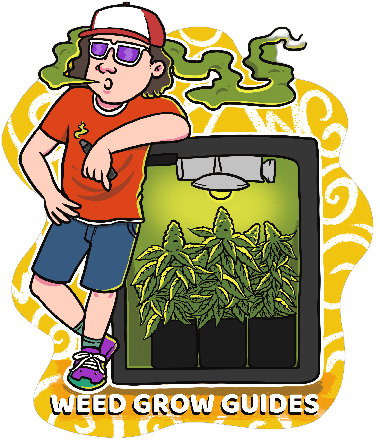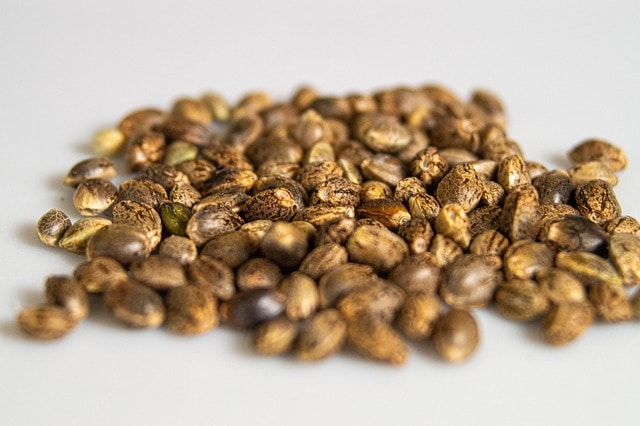Are you curious about the fascinating journey of a cannabis plant? From tiny seed to majestic bud, the stages of cannabis plant growth are a marvel to behold. In this article, we’ll take you on a delightful exploration of the various stages, from germination to vegetation and beyond. Get ready to discover the incredible transformations that occur as these resilient plants flourish and reach their full potential. So, sit back, relax, and join us on this captivating journey through the different stages of cannabis plant growth.
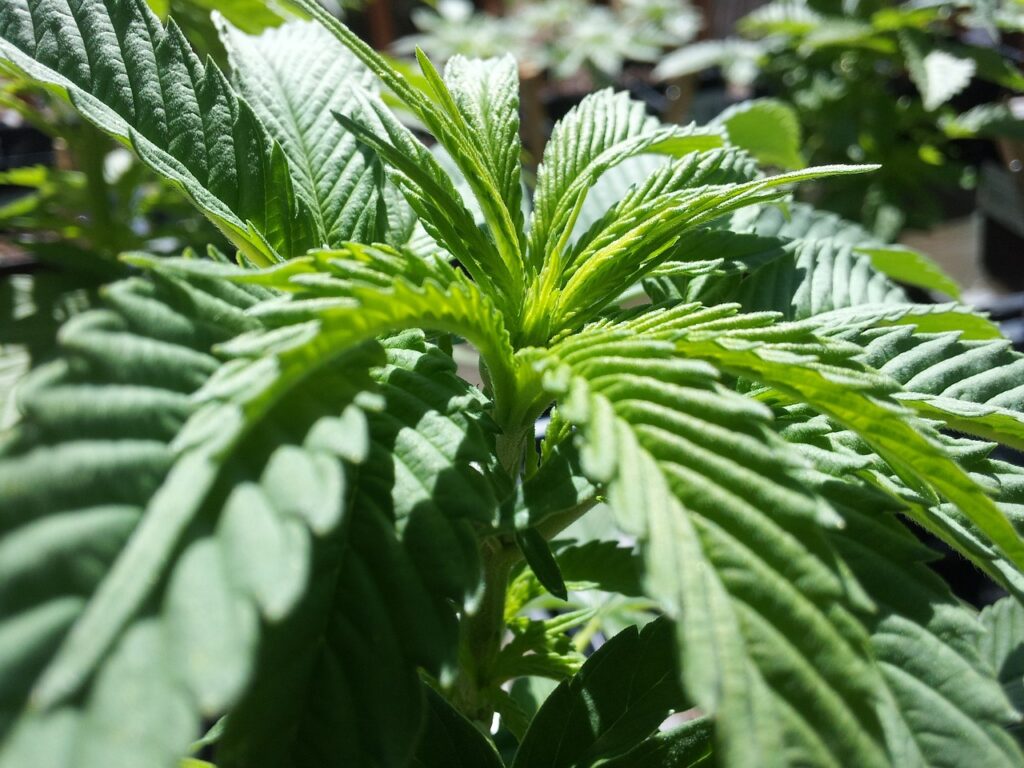
Stages of Cannabis Plant Growth
Germination
Seed Activation
In the first stage of cannabis plant growth, germination begins with seed activation. This process involves providing the seed with moisture and warmth, which triggers the seed’s natural response to start sprouting. You can initiate seed activation by placing your cannabis seeds in a moist environment such as a paper towel or between two damp cotton pads. Keep the seeds warm, ideally between 70 to 85 degrees Fahrenheit, to accelerate the germination process. It’s important to note that different strains may have varying germination requirements, so it’s best to follow the specific instructions provided by the seed breeder.
Root Development
Once the seeds have activated, the next stage is root development. The seedling will begin to produce a primary root, also known as a taproot, which anchors the plant into the growing medium and absorbs water and nutrients from the soil. As the taproot grows longer and thicker, smaller lateral roots will start to branch off, forming a well-developed root system that supports the plant’s overall growth. It is essential to provide your seedlings with a suitable growing medium that promotes healthy root development, such as a fine mix of peat moss, perlite, and vermiculite.
Emergence of the Seedling
The emergence of the seedling marks the final phase of germination. During this stage, the sprouted seed pushes through the growing medium’s surface and unfurls its cotyledons, also known as seed leaves. Cotyledons, which are initially responsible for providing food to the seedling, will gradually develop into true leaves as the plant continues to grow. At this point, it is crucial to provide the emerging seedling with ample light, preferably in the form of full-spectrum grow lights, to ensure proper photosynthesis and overall plant health.

Seedling Stage
Establishment of Cotyledons
During the seedling stage, the establishment of cotyledons plays a vital role in the plant’s early growth. Cotyledons, as mentioned earlier, are the initial leaves that emerge from the seed. These leaves contain nutrient-rich materials necessary for the development of the young plant until it starts producing true leaves. As the cotyledons receive light and undergo photosynthesis, they provide energy for the seedling to continue growing.
Development of True Leaves
As the seedling develops further, it will start producing true leaves, which are structurally different from cotyledons. True leaves emerge in pairs, and their appearance typically indicates the growth of a healthy and well-established seedling. These leaves are responsible for photosynthesis, the process by which plants convert light energy into chemical energy, ultimately fueling their growth. As the plant develops more true leaves, it gains an increased ability to produce energy and support further growth.
Formation of Roots
While the cotyledons and true leaves develop above the ground, the seedling also focuses on root formation below the surface. During the seedling stage, the root system expands, spreading out and establishing a strong foundation for the plant. Adequate root development is vital for nutrient uptake and water absorption, enabling the plant to acquire the essential components it needs for healthy growth. As the seedling matures and transitions to the vegetative stage, the root system becomes even more critical in supporting the plant’s overall nutrient requirements.
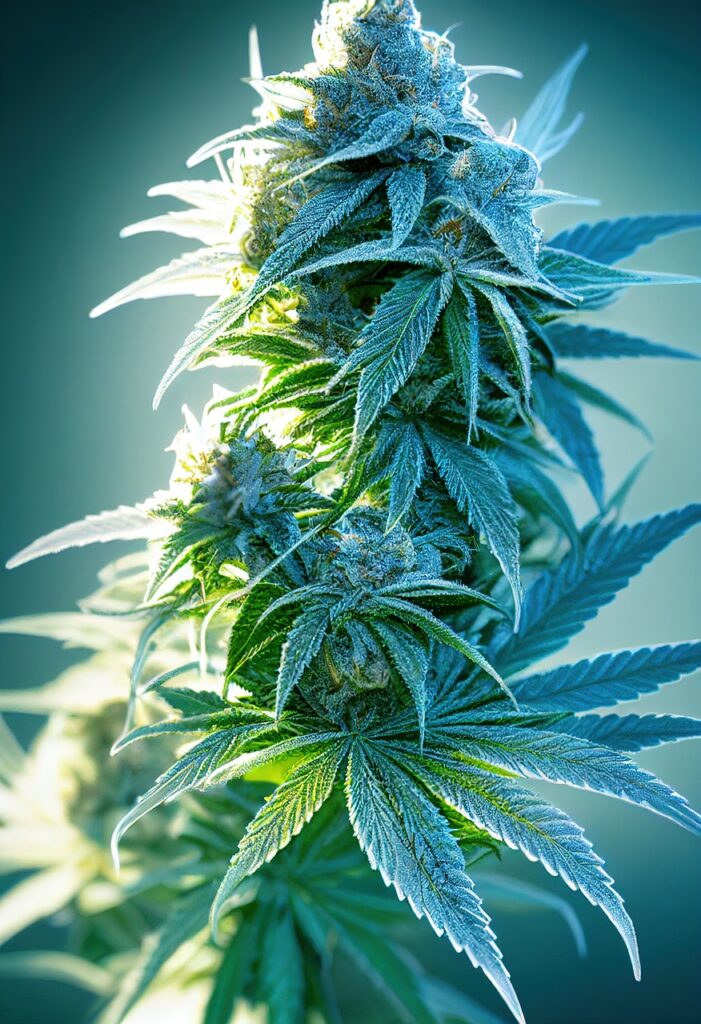
Vegetative Stage
Growth and Branching
The vegetative stage is characterized by significant growth and branching. During this phase, the cannabis plant experiences vigorous growth as it develops more branches and nodes. Nodes are the points where branches and leaves emerge from the main stem. With proper nutrients, light, and environmental conditions, the plant’s stem elongates, and multiple branches form, allowing for fuller and bushier growth. Regular pruning and training techniques such as topping, fimming, or low-stress training can help optimize growth and shape the plant to your desired structure.
Leaf Production
As the plant enters the vegetative stage, leaf production intensifies. Cannabis plants are known for their broad, serrated leaves that play a crucial role in photosynthesis. More leaves mean a greater surface area for light absorption, resulting in increased energy production for the plant. It is important to ensure your plants’ foliage receives ample light exposure to maximize photosynthetic efficiency. Additionally, healthy leaf production also indicates that the plant is receiving adequate nutrients and water to support its growth and development.
Photosynthesis
Photosynthesis is the metabolic process where plants convert light energy into chemical energy, utilizing carbon dioxide and water to produce oxygen and glucose. In the vegetative stage, photosynthesis is at its peak as the plant has ample surface area for light absorption and an abundance of leaves actively engaged in this critical process. Providing the plant with proper lighting, whether through natural sunlight or artificial grow lights, is essential to ensure optimal photosynthesis, resulting in vigorous growth and lush foliage.
Stem Thickening
As the plant continues to grow in the vegetative stage, the stem undergoes thickening, strengthening the plant’s overall structure. Healthy stems are crucial for supporting the weight of the plant, ensuring efficient transport of water and nutrients, and providing stability against environmental stressors. The thickening of the stem is particularly vital for cannabis plants, which can grow quite tall and heavy during the flowering stage. Supporting the stems through techniques such as trellising or staking can help maintain their integrity and prevent breakage.
Pre-Flowering Stage
Sexual Differentiation
During the pre-flowering stage, cannabis plants undergo sexual differentiation, determining their gender. Female plants develop pistils, which are small hair-like structures emerging from the leaf nodes, while male plants produce pollen sacs or pods. Identifying and removing male plants from your grow space is crucial unless you are specifically cultivating for breeding purposes. Female plants are the ones that produce the highly desired flowering buds, rich in cannabinoids and terpenes, making them the preferred choice for most growers.
Preparation for Flowering
In preparation for the flowering stage, cannabis plants undergo physical and physiological changes. The plant redirects its energy towards reproductive activities, transitioning from vegetative growth to flowering. During this stage, the plant may exhibit an increase in vertical growth, stretching to reach for adequate light exposure. Additionally, the plant may also display an increase in the production of secondary metabolites, such as cannabinoids and terpenes, as it prepares to produce resin-rich buds. Providing the plant with appropriate lighting and adjusting the photoperiod to a 12/12 light-dark cycle initiates the flowering stage.

Flowering Stage
Bud Formation
The flowering stage is the most anticipated phase of the cannabis plant’s growth cycle as it is when the prized buds begin to form. Buds emerge at the nodes and internodes and gradually develop into colas, which are dense clusters of flowers. These colas are rich in cannabinoids and terpenes, the essential compounds responsible for cannabis’s effects and aroma. As the buds develop, they become covered in trichomes, which are the resinous glands that contain the highest concentration of cannabinoids. Proper care, optimal nutrient supplementation, and the right environmental conditions ensure the development of healthy and robust buds.
Pistil Development
The flowering stage is also characterized by the development of pistils, which are the female reproductive organs of the plant. Pistils are thread-like structures that emerge from the calyx, a small pod-like structure where the ovules are housed. The pistils play a crucial role in capturing pollen for fertilization, which leads to the development of seeds. For most growers, the presence of pistils is an indicator that the plant is producing unpollinated flowers, known as sensimilla, resulting in potent and seedless cannabis buds.
Trichome Production
Trichomes are the resinous glands that cover the flowers, leaves, and stems of the cannabis plant. These tiny structures are responsible for producing cannabinoids, terpenes, and other compounds that contribute to cannabis’s unique effects and aromas. During the flowering stage, trichome production intensifies, with the glandular heads swelling and becoming more pronounced. The trichomes’ appearance and development serve as crucial cues for determining the optimal time to harvest your plants, as they house the highest concentrations of cannabinoids and terpenes.
Ripening Stage
Development of Resin Glands
As the flowering stage progresses, the resin glands continue to develop, resulting in higher concentrations of cannabinoids and terpenes within the plant’s flowers. This resin is responsible for the stickiness and aromatic properties of mature cannabis buds. Proper nutrient management, light exposure, and environmental control contribute to the resin glands’ healthy development, ensuring the production of potent and flavorful cannabis.
Stigma Recession
During the ripening stage, the plant’s stigma, which is part of the pistil and appears as small hair-like structures, starts to recede. The stigmas typically undergo color changes, transitioning from white to brown or orange hues. The recession of the stigma indicates that the plant is nearing its peak maturity and is ready for harvesting. Observing the changes in stigma color is an essential visual cue for determining the optimal harvest time.
Pistil Color Change
Similar to the stigmas, the pistils also undergo color changes as the plant ripens. The vibrant white pistils gradually darken, turning shades of brown or red. These changes signify the plant’s progression and indicate that the flowers are maturing, showing increased potency and flavor. Monitoring the pistil color changes, along with other visual indicators and trichome development, guides growers in determining the ideal harvest window for their cannabis plants.
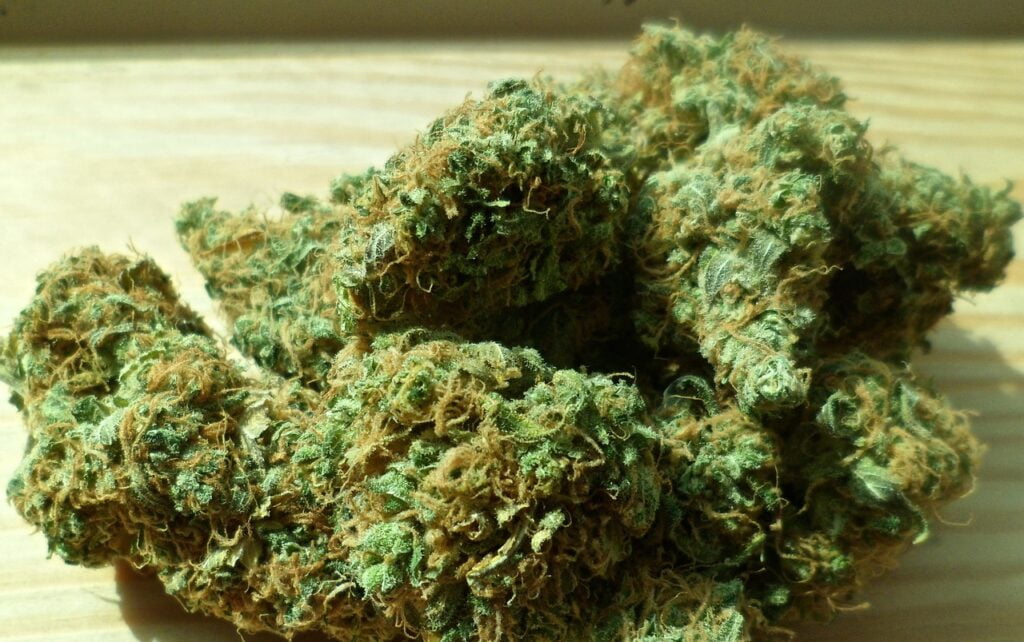
Harvesting
Proper Timing
Harvesting at the right time is crucial to ensure the highest quality yield. Harvesting too early may result in underdeveloped buds with lower potency, while harvesting too late may lead to diminished flavors and possibly excessive decarboxylation of cannabinoids. Monitoring the trichomes’ maturity using a magnifying tool is a reliable method for determining the optimal harvest time. The ideal time to harvest is when trichomes appear milky or translucent, with a portion of them developing an amber color, signaling peak cannabinoid production.
Cutting and Trimming
Once the plants have reached their peak maturity, it’s time to begin the harvest process. Using sanitized pruning shears or scissors, carefully cut the plants at the base of their main stems. Although it may be tempting to remove excess foliage immediately, it is recommended to leave the larger fan leaves intact during the initial harvest. Trimming, the process of removing unwanted leaves and stems from the harvested buds, is typically performed after drying and curing.
Drying and Curing
Removal of Moisture
After harvesting, the next step is to dry the buds. Drying is crucial to remove excess moisture from the plant material, preventing the growth of mold and bacteria. The ideal drying environment is cool, dark, and well-ventilated. Hanging the harvested plants upside down in a room with a temperature of around 60-70 degrees Fahrenheit and a relative humidity of around 50% allows for gradual drying while maintaining the buds’ quality. Proper air circulation helps expedite the drying process without compromising the flavors, aromas, and potency of the buds.
Enhancement of Flavor and Potency
Following the drying stage, curing is the next step in the process. Curing involves storing the dried buds in a controlled environment to allow for further chemical processes that enhance their flavors, aromas, and potency. Placing the dried buds in airtight containers, such as glass jars, and maintaining a humidity level of around 60-65% for several weeks helps preserve and improve the overall quality. Regularly “burping” the jars by briefly opening them allows excess moisture to escape while preventing mold formation.

Storage
Proper Conditions
Once the drying and curing processes are complete, proper storage is essential to maintain the quality of your harvested buds over an extended period. Storing your cannabis in a cool, dark, and dry environment helps prevent degradation and the loss of cannabinoids and terpenes. Airtight containers, such as jars with rubber gaskets, provide a suitable storage solution. Additionally, storing the containers in a cool room or refrigerator can further prolong the freshness and potency of your cannabis. Learn how to cure your weed HERE.
Length of Storage
The length of time cannabis can be stored without significant degradation varies depending on various factors, such as the strain, quality of the curing process, and storage conditions. When stored correctly, cannabis can maintain its potency and flavor for several months or even up to a year. However, gradual degradation may still occur over time. To ensure the best experience, aim to consume your stored cannabis within six months of harvesting, although it may remain enjoyable beyond that timeframe.
Regeneration
Rejuvenation of Plant
After harvesting, it is possible to rejuvenate the plant and start a new growth cycle through regeneration. Regeneration involves stimulating the remaining parts of the harvested cannabis plant to regrow and develop new shoots. By leaving a portion of the plant’s stem intact after harvesting, it is possible to initiate new growth. Providing the regenerated plant with proper care, nutrients, and environmental conditions allows it to go through the various growth stages discussed earlier, leading to another harvest in the future.
Cutting and Cloning
To facilitate regeneration, cuttings can be taken from the harvested plant and rooted to create clones. Cloning involves cutting a healthy branch, typically from the lower portion of the remaining plant, and placing it in a rooting medium under suitable conditions for root development. With the proper care and attention, cuttings can develop roots and grow into genetically identical plants, ready to undergo the different stages of growth, eventually resulting in a new harvest.
Rooting and Transplanting
When the cuttings successfully root, they can be transplanted into a suitable growing medium or hydroponic system to continue growth. Carefully transferring the rooted cuttings ensures their survival and enables them to establish themselves as new plants. It is crucial to provide them with an appropriate nutrient-rich medium, suitable lighting, and optimal environmental conditions to foster healthy growth. By following the same care regimen as during the previous cultivation cycles, you can experience a continuous journey of cannabis plant growth and reap multiple harvests.
In conclusion, understanding the different stages of cannabis plant growth is essential for every grower. From germination to regeneration, each phase requires specific attention and care to support the plant’s development and maximize yield. By providing the appropriate environment, nutrients, and lighting throughout each stage, you can cultivate healthy, vigorous cannabis plants and enjoy the rewards of successful cultivation. Happy growing and make sure to check out our grow guides.
